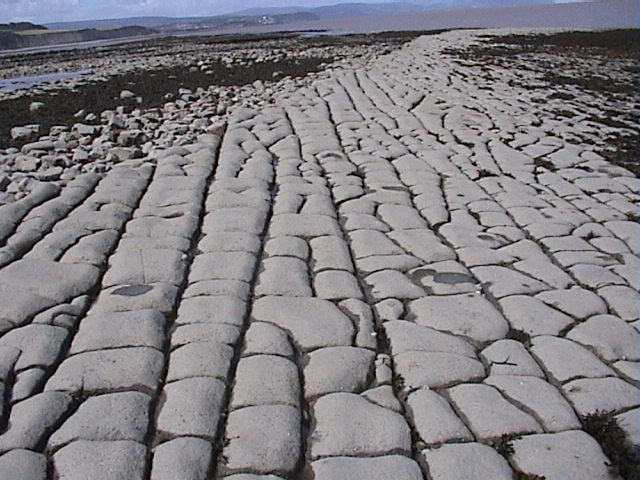St Audries bay is another location along the Somerset Jurassic coastline providing more wave-cut platforms and cliffs in which to find ammonites and shells.
DIRECTIONS
♦ St. Audries Bay is best accessed from a narrow road coming out of Watchet heading towards Quantoxhead. Look for a black and white, old style house next to the narrow road.
♦ The narrow road with passing places eventually leads to a large car park with toilets. A steep path will take you to the beach, but it is a difficult climb.
♦ Ref: 51.18009°N, 3.27617°W
PROFILE INFO
FIND FREQUENCY: ♦♦♦ – On the foreshore, St Audries Bay can be very productive and the best time to collect is during scouring conditions.
CHILDREN: ♦♦♦♦ – This location is suitable for family trips.
ACCESS: ♦♦♦ – A car park at St Audries Bay takes you directly onto the beach and it is easy to find.
TYPE: – St Audries Bay is a foreshore and cliff location, and fossils can be found in both. However, the vast majority of fossils are found in rocks on the foreshore or exposed during scouring tides.
FOSSIL HUNTING
Fossils at St Audries Bay are found on the foreshore. Sometimes, this area can be very productive especially during scouring, but often it can bring disappointment with the beds covered by sand.
Head west from the steps towards the Jurassic Lias rocks. Most fossils are found on the foreshore exposed in the wave cut platform, at the base of scree slopes or directly in the cliff face. Take extra care when exploring near any cliff face and wear a hard hat. A good scour is often required for any decent finds, but cliff falls regularly yield complete large ammonites just lying on the beach waiting to be picked up.
Ammonites can be collected one meter above a bed of oysters. This is a hard limestone usually seen exposed as a platform on the foreshore (depending on how built up the beach is) and is found at the Doniford headland. The bed of ammonites is the first of many at various intervals in the Lias. Ammonites can be found in this first layer (Psiloceras and Caloceras). Waehneroceras and Laqueoceras can be found further west on the foreshore and are very common. Other ammonites and shells can be found, but these tend to be in the higher beds, cliff falls or can be found searching through boulders on the beach.

GEOLOGY
St Audries bay has the most interesting geology in Somerset. To the east, the bay exposes nearly the whole sequence of rocks from the Upper Triassic Mercia Mudstone Group and to the west, the beds succeed down to the Lower Jurassic Blue Lias beds.
Looking east the headland named Blue Ben is visible, with Lias rocks faulted against the red Triassic marl of the Mercia Mudstone Group.
To the west, the rocks are predominantly those of the Blue Lias Formation. Here ammonites are very common within the alternating layers of black shale, and splitting of large blocks will reveal specimens similar to those below. The Aldergrove Beds of the Lias Group (alternating grey mudstones and limestones) are well exposed. The lower parts of the Blue Lias beds can be seen higher up by walking further west.


SAFETY
Common sense when collecting at all locations should be used and knowledge of tide times is essential. You can easily be cut off by the tide as the sea always reaches parts of the cliff. Be careful of falling rocks, as the cliffs are quite high and regularly fall.
EQUIPMENT
We recommend hammers and chisels for this location, but please be aware SSSI rules restrict hammering insitu bedrock.
ACCESS RIGHTS
This site is an SSSI. This means you can visit the site, but hammering the bedrock is not permitted. For full information about the reasons for the status of the site and restrictions please download the PDF from Natural England – SSSI Information
It is important to follow our ‘Code of Conduct’ when collecting fossils or visiting any site. Please also read our ‘Terms and Conditions‘
LINKS
♦ Buy Fossils, Crystals, Tools
♦ Location Discussions
♦ Deposits Magazine
♦ Join Fossil Hunts
♦ UK Fossils Network













